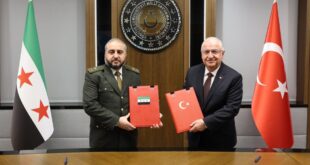Southeastern Europe’s proposed natural gas pipeline moved a step closer to reality after the Romanian president signed a decree allowing parliament to ratify construction.
The intergovernmental agreement on the Nabucco project was signed by the prime ministers of Turkey, Romania, Bulgaria, Hungary and Austria in Ankara in July.
Earlier this month the Romanian government tabled the bill in Parliament, as have the governments of the other signatory countries, a report by the Romanian national news agency Agerpres said.
The 2,050-mile pipeline will run from Erzurum in Turkey, through Bulgaria, Romania and Hungary to Baumgarten an der March, a major natural gas hub in Austria.
About 1,240 miles of pipeline will be in Turkey, 250 miles in Bulgaria, 290 miles in Romania and 240 miles in Hungary. The final 29 miles will be to the Austrian terminus.
Romania’s Transgaz company will provide $600 million for the project. The European Union will contribute around $288 million, Agerpres said.
Construction of the $11.4 billion 56-inch pipeline is expected to begin in 2010 and take four years. Early deliveries are expected to be between 158 billion and 459 billion cubic feet a year. Around 2020, the supply volume is expected to reach 1.1 trillion cubic feet.
The Romanian president’s signing marks the likely end of questions over the country’s commitment to the project after Basescu and Prime Minister Calin Popescu-Tariceanu ruled out Romania’s participation in Gazprom’s rival South Stream project.
In November 2008 they reaffirmed the country’s full commitment to the Western-backed Nabucco project, according to a report in the Eurasia Daily Monitor at the time. The two leaders acted after Gazprom had hinted at the possible inclusion of Romania in South Stream. The president and the prime minister are longtime political rivals, noted the Monitor report.
Just before the Romanian move, former German Foreign Minister and Princeton University Professor Joschka Fischer lauded the pipeline as a symbol of positive European evolution at a time of major energy concerns. “Nabucco is about a new relationship,” he told The New York Times from Berlin. “That is why Turkey is so important. Brussels understands this. I wish the member states did, too.”
Near Erzurum in Turkey, the Nabucco pipeline will be connected with the Tabriz–Erzurum pipeline and with the South Caucasus Pipeline. This will give the Nabucco pipeline a connection with the planned Trans-Caspian Gas Pipeline. Polish gas company PGNiG is said to be studying the possibility of a link from the Nabucco gas pipeline into Poland.
Europe aims to diversify its regional energy sector with Nabucco. Russia supplies roughly one-quarter of Europe’s gas, though 80 percent of that moves through Soviet-era pipelines in Ukraine. A January gas row between Moscow and Kiev left Europe in the cold for weeks.
Meanwhile, Europe expects its gas consumption to increase from 2005 levels of 17.7 trillion cubic feet per year to 28.8 trillion cubic feet by 2030, forcing the bloc to scramble for alternative gas supplies. With Russian production falling, Fischer said Nabucco is the answer to Europe’s energy woes.
Despite political backing for the project, however, Nabucco lacks firm commitments from suppliers in Central Asia and the Middle East.
Construction of the pipeline beginning in 2010 comes nearly eight years after the first talks between Austrian OMV and Turkish BOTAS. In June 2002 they were joined by MOL of Hungary, Bulgargaz of Bulgaria and Transgaz of Romania to sign a protocol of intention to construct the Nabucco pipeline.
The project reportedly was named Nabucco after the five partners to the protocol agreement were at the Vienna State Opera after their 2002 meeting and heard Giuseppe Verdi’s opera of the same name.
 Eurasia Press & News
Eurasia Press & News



